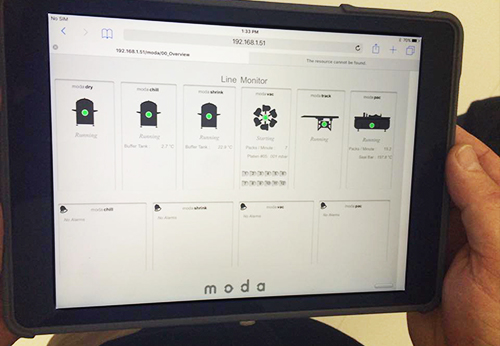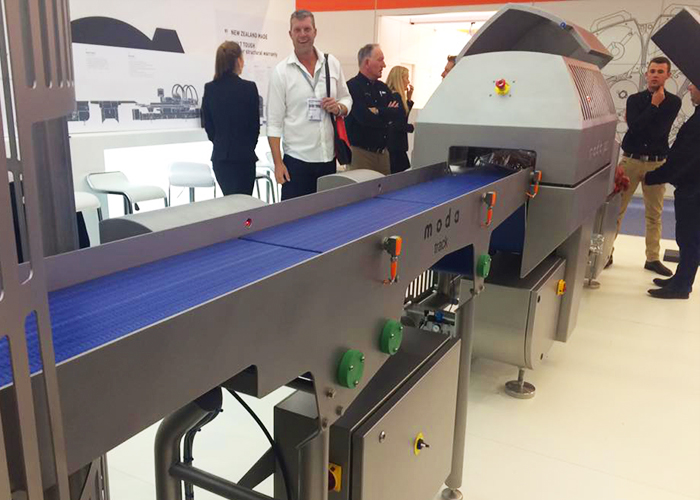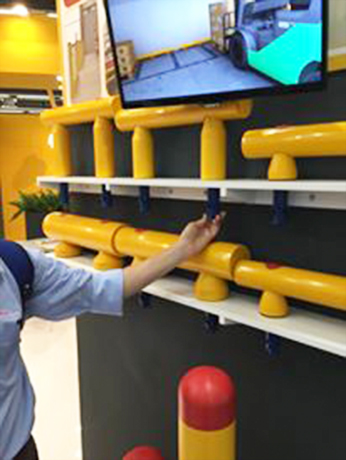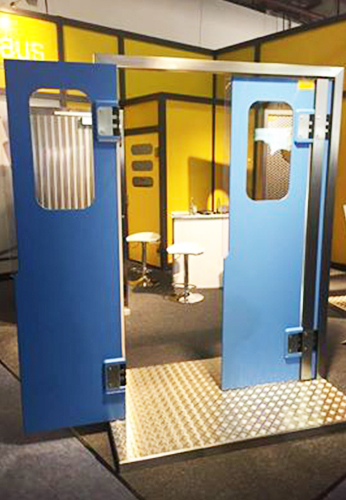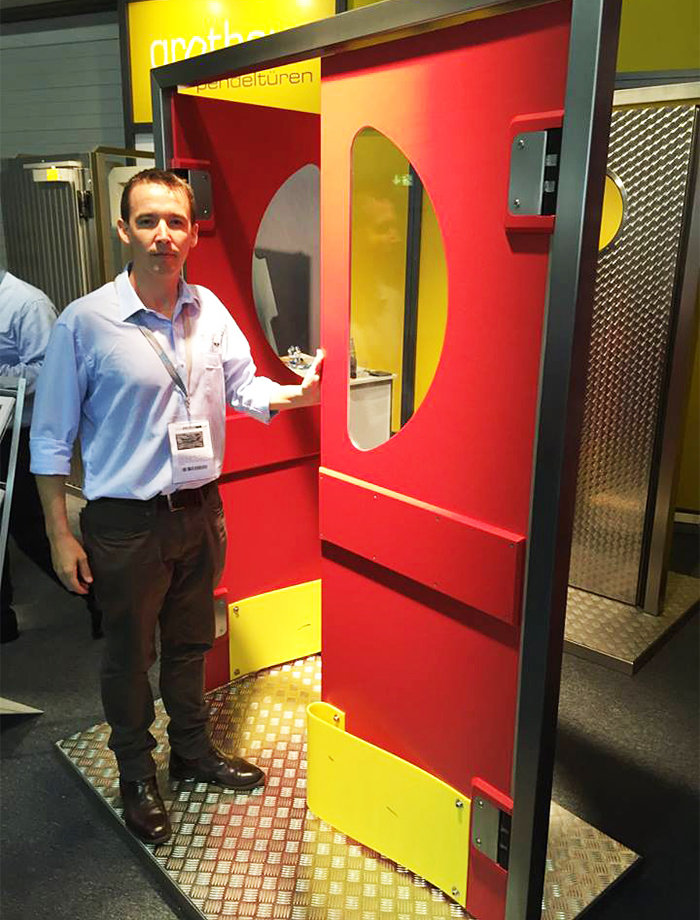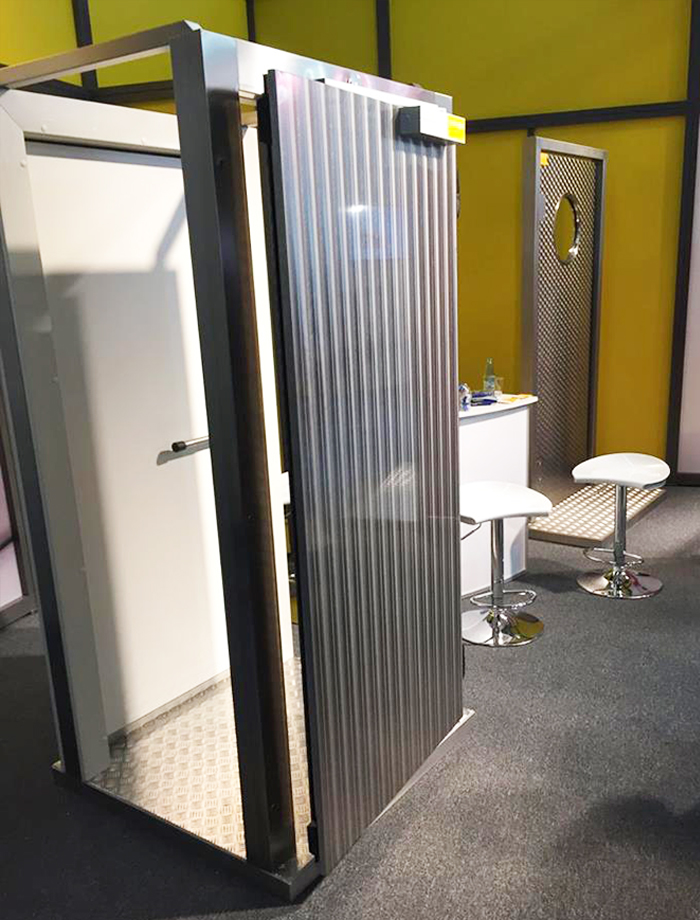Wiley’s IFFA Meat Daily Top Three:
- Moda Packing Machines: Reduced maintenance cost and lifetime ownership cost
- Plastic Replaceable Bollards: Safe, hygienic and flexible
- Cool-It Door Systems: Low cost, high hygiene and durable
Another excellent example of a rotary vacuum packing machine is the Moda packing machine. Moda have taken sleek design to the next level with their latest generation machine targeted at reducing maintenance and ownership costs.
The system has an integrated shrink tunnel line and feed and is designed so that control boxes and panels do not protrude from the machine’s base footprint. The symmetrical design allows for a significant reduction in moving parts that, along with other enhancements, could reduce maintenance cost by up to 55% compared to other rotary vacuum machines.
What is really interesting is the customisable functions of the Moda machine. Internal vacuum and seal monitoring systems have been coupled with Allen Bradley/Rockwell automation controls. This allows operators to adjust the machine using the HMI (human machine interface) touch screen and can seamlessly integrate with Rockwell’s MES Solution. In addition to this, a fully-programmable central lubrication system means less time spent on the greasing gun.
European systems for ensuring safety and hygiene in food manufacturing facilities is of an extremely high calibre. A good example of this is the plastic bollards and protection systems on show from a range of suppliers. While plastic bollard systems may seem inappropriate in industrial applications, suppliers offer several years of warranty, provided the installation is carried out correctly.
The plastic bollard systems rely on a booker rod system which is epoxied into the existing slab. The suppliers demonstrated how a high level of damage from impact can be rectified by simply removing and replacing of the bent booker rod and the damaged bollard. They showcased how any impact would not damage the slab nor would any replacement require modification or works on the slab.
If high hygiene and flexibility are a focus, then these systems are an application worth investigating. And, should there be an incident such as a damaged bollard or barrier, you can return to an operational state in next to no time.
Cool-It Door Systems were exhibiting a range of pre-formed polypropylene doors. Unlike panel doors trimmed in stainless channel (the typical configuration for such doors), the pre-formed poly doors are supplied as a single component, for ready installation. The benefit of a single-mould door is no cracks or crevices as potential zones for contaminant collection and the product presents as an excellent opportunity for high hygiene improvements.
All of the doors we examined seemed to be very durable and the Cool-It doors operate on a well-designed double-hinge system. The hinges have limited potential for contaminant collection and remain open when pushed to a certain extent.
Doors and doorways are an area of innovation that are often overlooked but offer the potential for significant improvements in hygiene and food safety.
Stay tuned for more of the latest from IFFA, as Wiley continue to deliver content straight to you.

